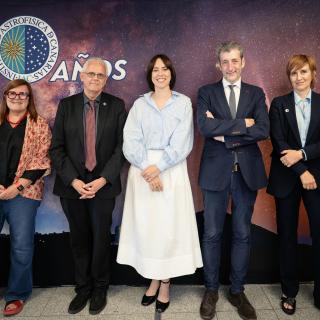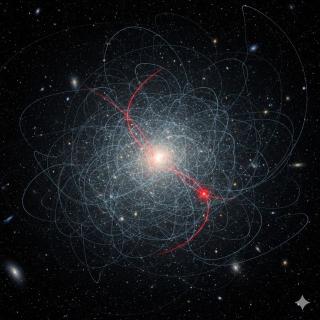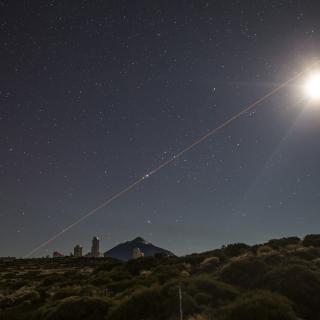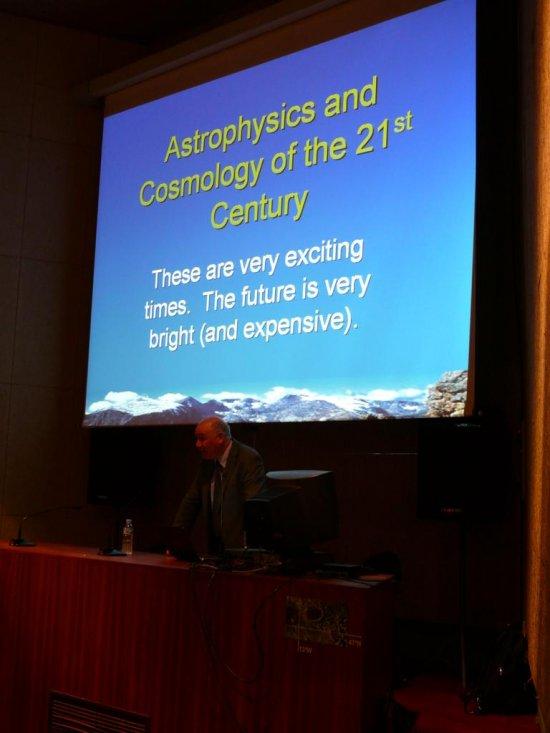It may interest you
-
 La ministra de Ciencia, Innovación y Universidades, Diana Morant, ha anunciado que el Gobierno de España está dispuesto a ofrecer hasta 400 millones de euros, a través del Centro para el Desarrollo Tecnológico y la Innovación (CDTI), para atraer a la isla de La Palma, en Canarias, el Telescopio de Treinta Metros (TMT, por sus siglas en inglés). La ministra lo ha anunciado durante la reunión del Consejo Rector del Instituto de Astrofísica de Canarias (IAC), que ha presidido hoy en La Palma, donde ha informado que esta tarde ha remitido una propuesta formal a la Fundación que gestiona el TMTAdvertised on
La ministra de Ciencia, Innovación y Universidades, Diana Morant, ha anunciado que el Gobierno de España está dispuesto a ofrecer hasta 400 millones de euros, a través del Centro para el Desarrollo Tecnológico y la Innovación (CDTI), para atraer a la isla de La Palma, en Canarias, el Telescopio de Treinta Metros (TMT, por sus siglas en inglés). La ministra lo ha anunciado durante la reunión del Consejo Rector del Instituto de Astrofísica de Canarias (IAC), que ha presidido hoy en La Palma, donde ha informado que esta tarde ha remitido una propuesta formal a la Fundación que gestiona el TMTAdvertised on -
 Ultra-faint dwarf galaxies, among the tiniest and faintest galaxies known, may hold the key to understanding one of the Universe’s biggest mysteries: the true nature of dark matter. A new study reveals that even a single collision between dark matter particles every 10 billion years — roughly the age of the Universe — is enough to explain the dark matter cores observed in these small systems. These galaxies, which contain only a few thousand stars, are dominated by dark matter and have relatively simple evolutionary histories. That makes them ideal cosmic laboratories for testing theoriesAdvertised on
Ultra-faint dwarf galaxies, among the tiniest and faintest galaxies known, may hold the key to understanding one of the Universe’s biggest mysteries: the true nature of dark matter. A new study reveals that even a single collision between dark matter particles every 10 billion years — roughly the age of the Universe — is enough to explain the dark matter cores observed in these small systems. These galaxies, which contain only a few thousand stars, are dominated by dark matter and have relatively simple evolutionary histories. That makes them ideal cosmic laboratories for testing theoriesAdvertised on -
 The Instituto de Astrofísica de Canarias is designing and developing, as ordered by the Spanish company Thales Alenia Space , the adaptive optics which will be a parto f the ground station for the GARBO project, the first Spanish geostationary system for distributing quantum keys by satellite. This is a decisive step in the field of secure quantum communication on a large scale, and will strengthn the position of Spain, and of Europe at the Forefront of this technology. Within the framework of the project the IAC will lead the development of the adaptive optics systems, and will participateAdvertised on
The Instituto de Astrofísica de Canarias is designing and developing, as ordered by the Spanish company Thales Alenia Space , the adaptive optics which will be a parto f the ground station for the GARBO project, the first Spanish geostationary system for distributing quantum keys by satellite. This is a decisive step in the field of secure quantum communication on a large scale, and will strengthn the position of Spain, and of Europe at the Forefront of this technology. Within the framework of the project the IAC will lead the development of the adaptive optics systems, and will participateAdvertised on
